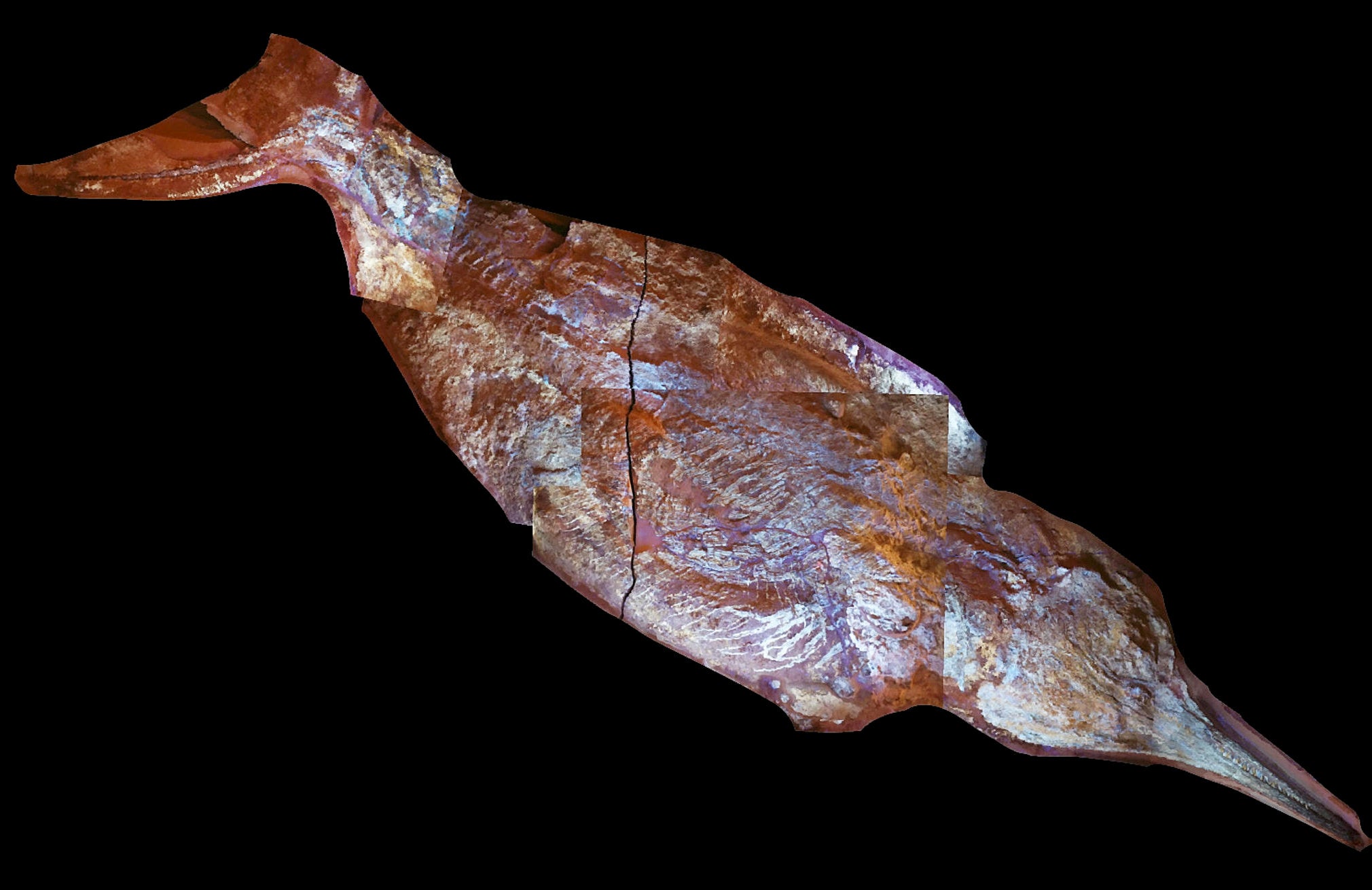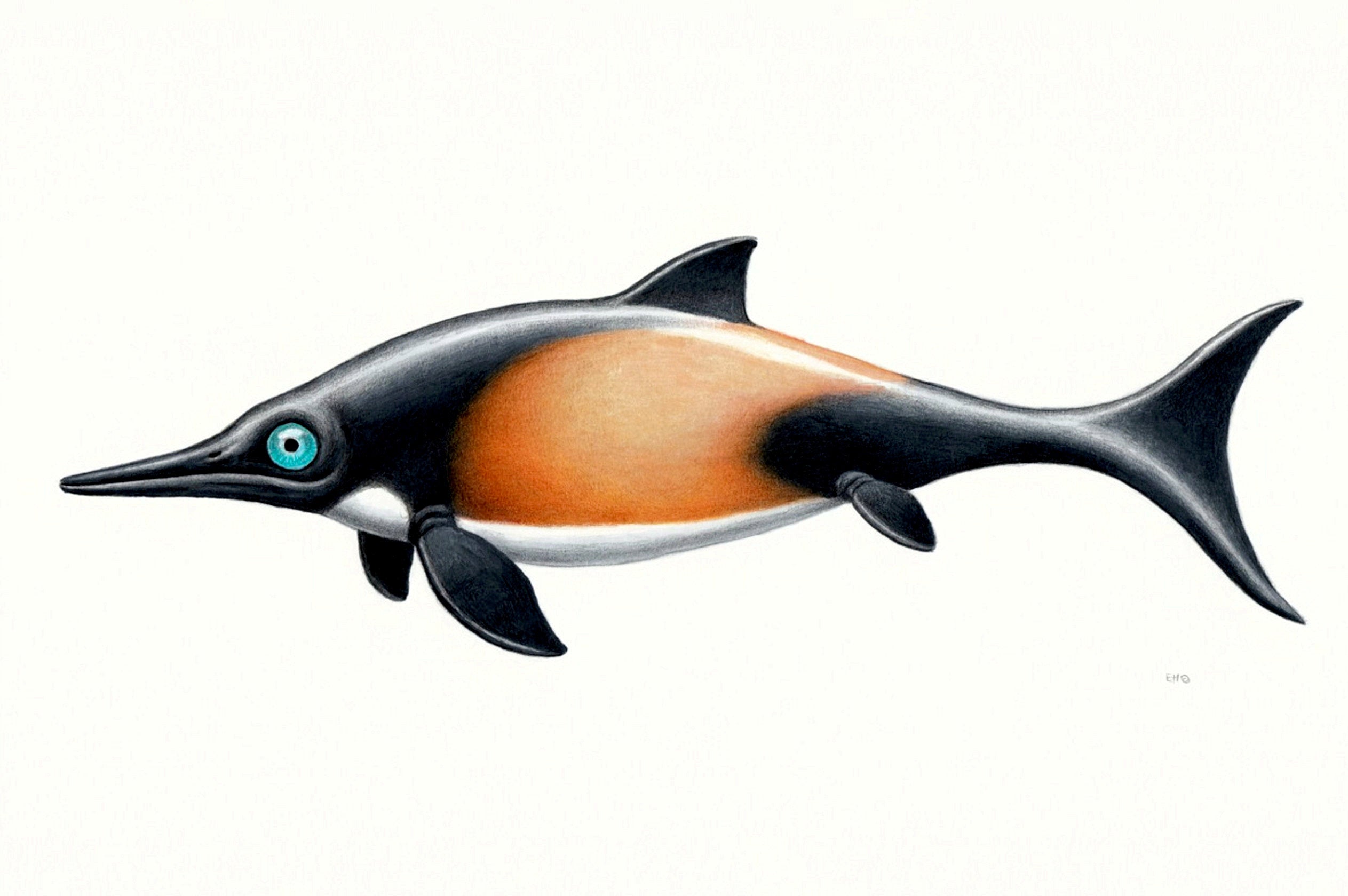Ancient sea creature that roamed oceans 150 million years ago ‘had blubber just like whales’
Ichthyosaurs were marine reptiles that resembled dolphins and could grow up to 65 feet in length

A sea creature that roamed the oceans 150 million years ago had blubber just like whales today, according to new research.
Scientists at the Natural History Museum in Oslo studied the remains of two ichthyosaurs discovered near Solnhofen, in southern Germany.
Ichthyosaurs, which existed before dinosaurs, were marine reptiles that resembled dolphins and could grow up to 65 feet in length.
The first skeleton, which was recently excavated, is believed to be the most complete ever discovered, preserved by its own thick layer of fat.
It has an outline of soft tissue around the body, including skin and blubber.
This means ichthyosaurs must have been warm-blooded, something they had in common with modern mammals and birds, according to the researchers.
This particular ichthyosaur, named Aegirosaurus, was small, measuring only about 5ft 2ins from the tip of its snout to its tail.
Dr Lene Liebe Delsett, who led the study, said: “The specimen is articulated and preserved in its entire length – missing only a portion of fin.
“During or after death, the animal landed on its back and side on the sea floor and was covered in fine sediments.
“Little oxygen and quite a lot of luck preserved it until it was found and excavated in 2009.”
The creature’s skull was compressed and the jaw contained cone-shaped teeth used for crushing prey.

The second set of remains consisted only of a tail fin with intact tail vertebrae and soft tissue around – confirming ichthyosaurs had crescent-shaped tails.
They were both unearthed at a site outside Solnhofen, where winged dinosaur Archaeopteryx, once hailed the first bird, was also dug up.
Dr Delsett said: “The complete specimen is really what makes this project unique because it tells a complete story.
“Ichthyosaurs are not common as fossils in Solnhofen, which at the time was a relatively shallow area with many islands, whereas ichthyosaurs were open ocean dwellers.
“We do not know why this one entered the lagoons, but it might be the reason why it died.
“Seeing the specimen makes an impact because it is so obviously a complete, dead animal body, where we can see its shape because of the unique preservation.”
The international team took small samples from soft tissue in the tail and looked at it through state-of-the-art scanners.

Phosphate found in the tissues likely contributed to the preservation, but it is not yet possible to identify all of the fossilised tissue types.
The study confirms the preservation of skin and possibly connective tissue – and Dr Deslett says the “major part of matter that surrounds and covers the specimen is probably decomposed blubber”.
Blubber provides insulation from cold ocean temperatures for whales and seals. It also stores energy that can be broken down when food is unavailable.
“The blubber is another strong similarity between whales and ichthyosaurs, in addition to their body shape,” Dr Delsett added.
“In the future, I hope that these two ichthyosaurs from Solnhofen can be used to enhance our understanding of swimming, as they preserve tail and body shape.”
Ichthyosaurs first appeared 250 million years ago - before the first dinosaurs.
They remained at the top of the food chain thanks to a streamlined, fish-like form built for speed.
They went extinct 90 million years ago due to a combination of climate change and slow evolution.
Additional reporting by SWNS






Join our commenting forum
Join thought-provoking conversations, follow other Independent readers and see their replies
Comments